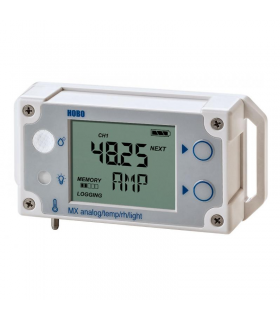Types of Hidden Enerey Waste found by Data Loggers (Part 2)
Introduction
Most of industrial or municipal energy consumers involve the conversion of electricity, either into useful products or into other types of energy. For example, lighting system, heating system, air or water supply systems. However, they cannot find out the hidden energy waste for gain more profit. In Part 1, we were found Improper Air Compressor Control, Inadequate (Compressed Air) Receiver Volume, Excessive Peak Energy Use and Not talking advantage of “Free Cooling” is a type of hidden energy waste can be found by Data Logger. For more information about the Part 1, you may read by access through this link: https://bit.ly/35VnuCB . In this Part 2, I will move to another 4 types of hidden energy waste can be found by Data Loggers.
Come and join us to discover this topic together.
Energy waste#5: Wasting Heat Energy
Air compressors must be cooled to remove the heat of compression. In this way, approximately 70% of the input energy is lost. It can be economical to recover this heat and use it for winter space heating and/or process heating. The value of this energy is often underestimated.
Energy waste#6: Gas-Fired Equipment Left Running
Gas flow meters are prohibitive for most energy management tasks. However, data loggers can be used to monitor run time on related electrical equipment such as combustion fans. Data loggers with CTV sensors can indicate when equipment is running, and an engine start/stop recorder can also record operating status. Install one of these loggers for a week on gasoline-powered equipment. Set the logging interval to every 30 minutes for 7 days.
Create a table for each monitored machine part. Document occupancy every 30 minutes in one column. Then add a column indicating whether the unit was running during, each of the 30- minutes intervals. For example, the scan could identify a boiler that left an over the weekend. For each 30 minutes interval that does not show occupants while the unit is left on, perform the following calculation to quantify how much money can be saved if the unit was off during those times:
Amount of energy consumed per hour by unit x number of hours per week the until is on while the area is unoccupied x weeks per year (52) x cost of energy per hour= money your facility could save by turning the unit off when the area is unoccupied.
Energy waste #7: Electric Machinery Left Running When Not Required
It seems obvious and simple to save money by turning off your lights and devices when not in use. However, an amazing amount of energy and money is wasted every day in this way. Machines that have been running for a long time may not restart properly, or machines may need to stay “ready”. We won’t tell you how to run your business, but data loggers can be used to determine how much it costs to keep things running. You will then have solid data on which to base your trading decisions.
Start by confirming when machines and lights are needed. Review production data and operational schedules and discuss operations with workers. He then uses data loggers and sensors to determine when machines are running and how much money is being spent unnecessarily.
Create a table for each piece of equipment to analyze the data. Note whether it was on or off for every 15 minutes and if it was needed. For each unproductive interval, perform the calculation below to quantify how much money could be saved by turning it off. We assume it is a 3-phase electric power circuit and you measured current on one phase. We further assume a power factor of 86 %.
- 15-minute interval Cost [$] = 1.732 x nominal line voltage x average load current x 0.86/ 1000/ 4 X (cost of electricity in $/ kWh)
Energy waste#8: Not Sustaining Your Gains
Data loggers are often used to significantly reduce energy consumption and costs. Unfortunately, these gains are not always sustained over time, within six months or a year, the power consumption returns to levels above. The cause of this problem is temporary changes. It is necessary to control temporary changes to maintain saving over time.
Example:
A high-speed machine applying labels to soup cans is not working properly. Getting the machine up and running as quickly as possible is key to achieving production goals. The operator thinks that increasing the compressed air pressure will help. So, the pressure is increased (in the entire plant) by 5 psi. The problem persists, so other cycles are performed on lighting, HVAC, etc. and the machine finally starts working properly.
In a typical plant, that’s the end of the story; problem solved. “In reality, the short-term problem can be fixed, but these temporary changes are now permanent with undesirable consequences, such as increased operating costs.
To be fair, the floor mechanics did their job, which is to keep the machine running; this should not change. However,
- Has anyone understood the problem and its causes?
- Have alternative solutions been considered?
- Has the best long-term solution been put in place?
To all of the above questions is “probably not”.
Recommendation:
- Encourage your mechanics to continue to support production and implement short-term fixes.
- Require those same mechanics to report all temporary modifications so formal problem-solving methodology that leads to the best long-term solution can be implemented.
- Don’t let a series of unreported temporary changes permanently increase your energy cost.





